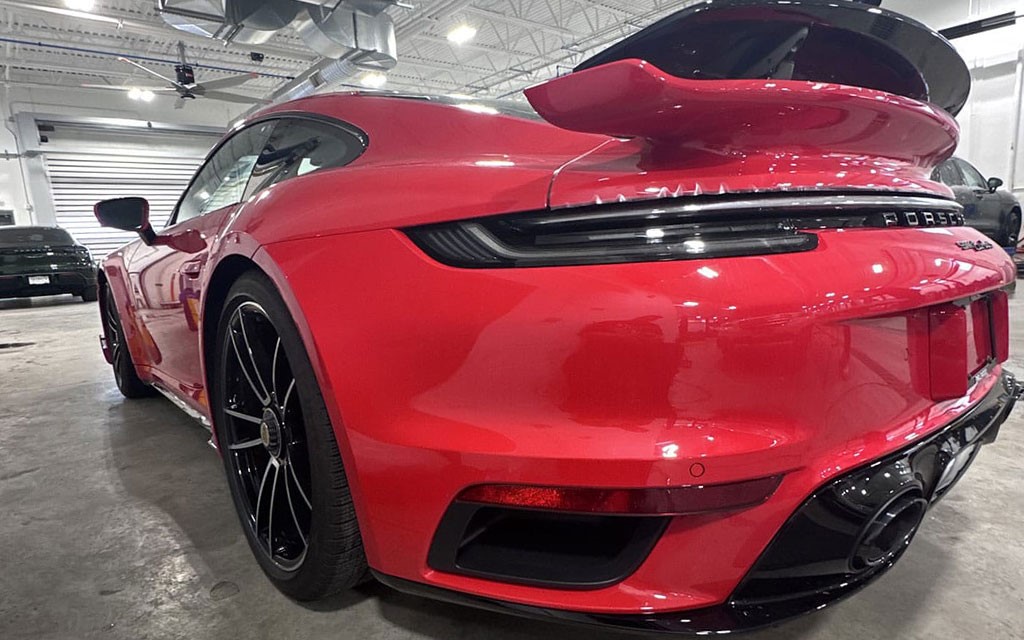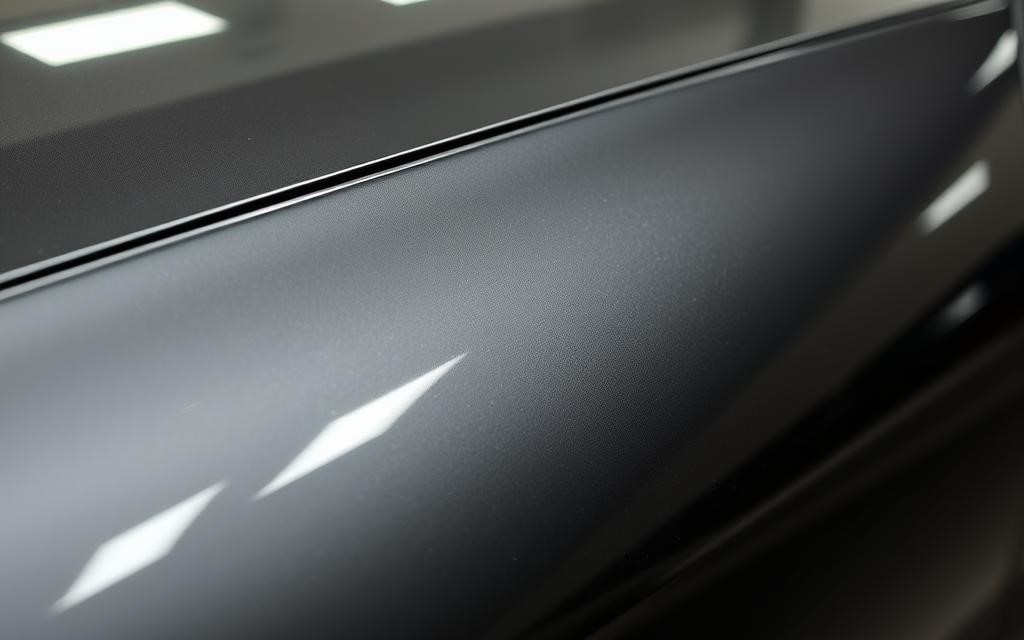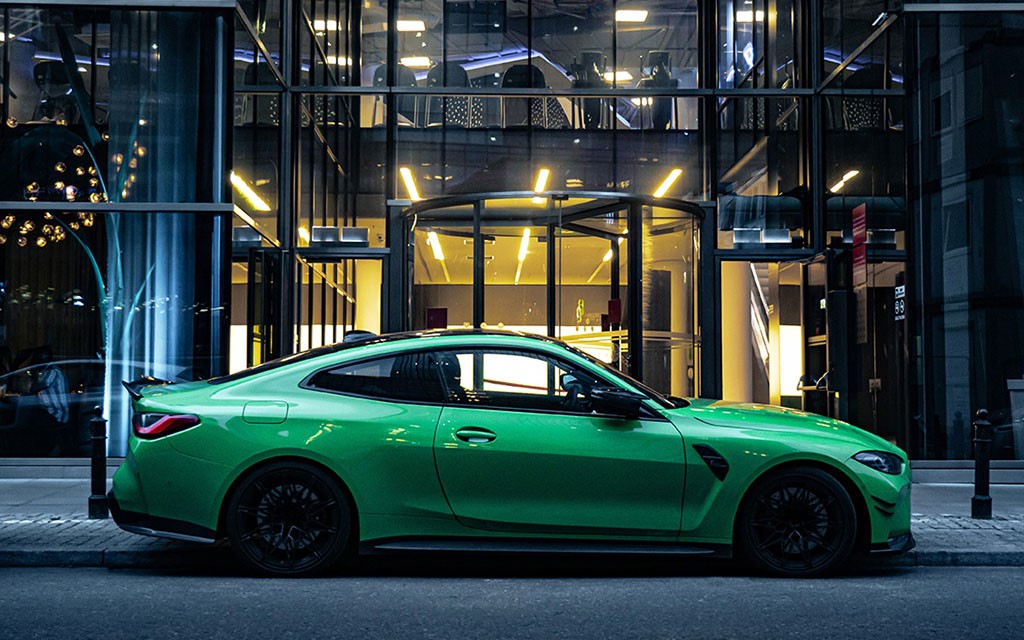Ever wondered what truly shields your car’s pristine finish from the relentless assault of daily driving conditions? Paint Protection Film, or PPF, serves as an invisible guardian that preserves your vehicle’s showroom appearance for years to come. This remarkable transparent layer effectively combats scratches, environmental contaminants, and UV-induced fading that would otherwise diminish your car’s aesthetic appeal. Whether you’re a passionate car enthusiast or simply a practical driver looking to maintain your investment, understanding what is paint protection film and its capabilities is essential knowledge for anyone who owns a new luxury vehicle or cherishes a classic automobile. Throughout this comprehensive guide, we’ll explore the science behind PPF, its real-world applications, and help you determine whether this premium paint protection solution aligns with your automotive care priorities.
Key Takeaways
- Paint Protection Film (PPF) provides an advanced protective barrier that safeguards your vehicle’s paint against everyday hazards.
- PPF offers significant benefits for maintaining the pristine appearance of both brand new cars and cherished vintage vehicles.
- This specialized protective film creates an effective shield against flying road debris, harsh environmental factors, and other damaging elements.
- Gaining a thorough understanding of the installation process and associated costs is crucial when evaluating whether PPF represents a worthwhile investment for your specific situation.
Professionally installed PPF substantially enhances your car’s potential resale value by preserving its exterior appearance throughout ownership.
Table of Contents
Understanding Paint Protection Film (PPF)
For discerning car owners seeking to maintain their vehicle’s pristine appearance, developing a comprehensive understanding of paint protection film is absolutely essential. This innovative product represents far more than a simple protective covering; it serves as a sophisticated defense system that preserves your car’s showroom finish while providing lasting protection against numerous environmental threats. Let’s delve deeper into what constitutes paint protection film, examine how this remarkable technology functions, and explore its impressive self-healing properties that have revolutionized automotive protection.
Definition of Paint Protection Film
Paint protection film, commonly referred to as PPF, consists of a virtually invisible urethane film that has been specifically engineered to form a protective barrier over your vehicle’s paint. This advanced material has been meticulously designed to shield your car’s exterior from potential damage such as rock chips, unsightly scratches, and stubborn stains that would otherwise compromise its appearance. The primary purpose of high-quality PPF is to maintain your vehicle’s flawless paint finish while significantly extending its aesthetic longevity through superior protection.
How PPF Works
The effectiveness of PPF lies in its ability to function as a sacrificial barrier against the continuous assault of road debris and environmental contaminants. When professionally installed, this specialized film seamlessly adheres to your car’s exterior surfaces, creating an additional layer of protection that absorbs the impact and abrasion that would typically damage your automotive paint. This remarkable defensive capability substantially reduces the likelihood of visible damage occurring, thereby preserving your vehicle’s immaculate appearance throughout years of regular driving conditions.
Self-Healing Properties of PPF
Modern PPF technology incorporates revolutionary self-healing properties that represent a significant advancement in automotive protection. These cutting-edge films possess the remarkable ability to repair minor surface scratches automatically through exposure to heat generated either by direct sunlight or your vehicle’s engine temperature. This innovative self-restoration capability significantly enhances the film’s durability while maintaining the continuous level of protection your car receives, ensuring your investment continues to deliver outstanding performance throughout its service life.
Benefits of Using Paint Protection Film
The application of paint protection film offers numerous advantages that extend well beyond basic protection for car enthusiasts and everyday drivers alike. It provides exceptional prevention against common paint damage, offers comprehensive defense against harsh environmental elements, and contributes significantly to maintaining your vehicle’s long-term financial value. Understanding these substantial benefits allows owners to make informed decisions about implementing this premium protection solution for their prized automobiles.
Prevention of Paint Damage
PPF provides remarkable protection that dramatically reduces the incidence of paint damage resulting from daily driving conditions. This specialized film creates an effective barrier against potential hazards such as flying rock chips, abrasive scratches from airborne road debris, and unsightly discoloration caused by organic contaminants like tree sap and insect residue. This comprehensive protection helps maintain your vehicle’s original appearance, preserving the factory paint in pristine condition despite regular exposure to challenging driving environments.
Protection Against Environmental Factors
Exposure to harsh environmental conditions including intense UV rays and adverse weather can gradually deteriorate your vehicle’s paint quality over time. PPF acts as a robust shield against these damaging elements, effectively preventing premature fading and surface degradation caused by prolonged sun exposure. This protective barrier maintains your car’s vibrant color and glossy shine, ensuring it remains visually appealing throughout ownership despite continuous exposure to potentially harmful environmental factors.
Enhanced Resale Value of Your Vehicle
Maintaining exceptional exterior condition significantly impacts your car’s future resale value when it’s time to sell or trade. Vehicles protected by professional-grade PPF typically present with minimal surface imperfections, making them considerably more attractive to prospective buyers in the competitive used car market. This preserved aesthetic quality frequently translates into tangible financial benefits, potentially generating thousands of dollars in additional value compared to unprotected vehicles of similar age and mileage.
What is Paint Protection Film (PPF) and Its Application
Paint protection film, or PPF, serves as an advanced safeguard for your vehicle against numerous potential sources of damage. This innovative solution helps keep your car looking newer for significantly longer periods than would otherwise be possible. Developing a solid understanding of proper PPF application techniques and identifying the most vulnerable areas requiring protection can dramatically enhance your vehicle’s resistance to everyday wear and tear.
Installation Methods for PPF
The installation of PPF can be accomplished through several methodologies, with gel-based, soap-solution, and specialized sealant techniques representing the most widely utilized approaches in professional settings. Each installation method offers distinct advantages that may be more or less suitable depending on your specific vehicle model and the installer’s expertise level. Professional PPF installation ensures seamless application with invisible edges of the film, resulting in a flawless finish that maintains your car’s original aesthetic appeal while providing maximum protection.
Areas of the Vehicle Commonly Protected
Certain areas of your vehicle face substantially higher exposure to potential damage during normal driving conditions. The hood, front bumper, side mirrors, and fenders typically experience the greatest concentration of impacts from flying debris and environmental contaminants. Additionally, door edges and truck beds often sustain significant wear from regular use. Understanding these vulnerability patterns helps vehicle owners make informed decisions about where to apply PPF for maximum protective benefit and value.
Costs Associated with Paint Protection Film Installation
The financial investment required for paint protection film cost varies considerably based on several key factors. Understanding these variables helps potential buyers evaluate whether this premium protection solution represents a worthwhile expenditure for their specific circumstances. Several crucial considerations influence the ultimate price point of professional PPF installation.
Factors Influencing PPF Costs
Multiple variables significantly impact the overall cost of paint protection film application. The specific quality and brand of film selected represents a major price determinant, with premium films commanding substantially higher prices due to their advanced protective capabilities and durability. The installer’s expertise level also plays a crucial role in cost determination, with highly skilled professionals typically charging premium rates that reflect their specialized knowledge and precise application techniques. Additionally, the extent of coverage desired—whether partial or complete vehicle protection—directly affects the final price.
Geographic location also influences PPF installation costs due to regional market variations and local economic factors that impact service pricing.
Price Range for Different Applications
Complete vehicle PPF application typically ranges between $2,000 and $7,000 or potentially higher, depending on the vehicle’s size, complexity, and the specific film quality selected. However, partial protection packages focusing on particularly vulnerable areas such as the front bumper, hood, and side mirrors offer more accessible entry points into PPF protection. These targeted coverage options typically start around $800 for basic protection packages and increase based on the specific areas included and film quality selected.
Weighing the Pros and Cons of Paint Protection Film
When evaluating paint protection film, careful consideration of both advantages and potential drawbacks is essential for making an informed decision. High-quality PPF offers exceptional protection against scratches, chips, and environmental damage that would otherwise compromise your vehicle’s appearance. It effectively maintains your car’s pristine condition while potentially increasing its resale value when properly maintained throughout ownership.
However, certain limitations must also be acknowledged when considering this investment. The initial PPF installation cost represents a significant financial commitment that may exceed some owners’ budgetary constraints. Additionally, lower-quality films may experience discoloration or yellowing over time, potentially detracting from rather than enhancing your vehicle’s appearance. Furthermore, achieving optimal results requires professional installation by experienced technicians.
Before committing to paint protection film, thoroughly evaluating these competing factors against your specific needs, vehicle value, and long-term ownership plans will help determine if PPF represents the right protection solution for your particular situation.
Comparison: Paint Protection Film vs. Ceramic Coating
Feature | Paint Protection Film (PPF) | Ceramic Coating |
Physical Protection | Excellent protection against rock chips, scratches, and road debris | Limited physical protection; primarily enhances chemical resistance |
Thickness | Typically 6-8 mils thick (substantial physical barrier) | Microscopically thin layer (measured in microns) |
Self-Healing | Modern PPF offers self-healing properties for minor scratches | No self-healing capabilities |
UV Protection | Excellent protection against UV damage and fading | Excellent UV protection properties |
Durability | 7-10 years with proper maintenance | 2-5 years depending on quality and maintenance |
Cost | $2,000-$7,000+ for full vehicle coverage | $500-$2,000 for full vehicle application |
Installation Complexity | Requires professional installation | Professional application recommended but less complex |
Chemical Resistance | Good resistance to chemicals and contaminants | Superior chemical resistance and hydrophobic properties |
Appearance | Invisible when properly installed | Enhances gloss and depth of paint |
Maintenance | Relatively low maintenance requirements | Requires specific maintenance protocols |
In conclusion, paint protection film represents a significant investment in preserving your vehicle’s appearance and value. While the upfront costs may seem substantial, the long-term benefits of maintaining your car’s paint in pristine condition often justify the expense for many owners. Whether you choose partial application for high-impact areas or full-vehicle coverage, quality PPF delivers exceptional paint protection against the daily hazards of driving, potentially saving you from costly paint correction or repainting down the road. For those who truly value their vehicle’s appearance and plan long-term ownership, professional PPF installation offers peace of mind and tangible returns that make it a worthwhile consideration for serious car enthusiasts and practical owners alike. Still unsure about the difference? Check out our detailed comparison of PPF vs ceramic coating.
Frequently Asked Questions About PPF and Ceramic Coating
What are the key differences between PPF vs ceramic coating?
Paint Protection Film (PPF) is a physical, self-healing urethane film that provides a thick protective barrier against rock chips, scratches, and physical impacts. Ceramic coating, on the other hand, is a liquid polymer that chemically bonds to your vehicle’s paint, offering superior chemical resistance, UV protection, and hydrophobic properties. PPF offers stronger physical protection while ceramic coating enhances gloss and makes maintenance easier. The most significant difference is that PPF can absorb impacts and prevent paint damage, whereas ceramic coating mainly protects against chemical damage and environmental contaminants.
Can I use both paint protection film and ceramic coating together?
Yes, using both PPF and ceramic coating together creates an optimal protection system for your car. Many professionals recommend applying PPF to high-impact areas like the hood, bumpers, and mirrors, then applying ceramic coating over the entire vehicle (including over the PPF). This combination provides the physical impact protection of PPF with the chemical resistance, hydrophobic properties, and enhanced gloss of ceramic coating. The ceramic coating on top of PPF can also make the film easier to clean and maintain while extending its lifespan.
How long do protection film and ceramic coating last?
Paint Protection Film typically lasts 5-10 years depending on the quality of the film, installation, and maintenance. Premium PPF products often come with warranties ranging from 5-10 years. Ceramic coating durability varies significantly based on quality and number of layers, with consumer-grade products lasting 1-2 years and professional-grade coatings lasting 5+ years with proper maintenance. Environmental factors, washing techniques, and whether the vehicle is garage-kept also affect longevity. For long-term protection, PPF generally offers a longer service life than most ceramic coatings.
What are the similarities between PPF and ceramic coating?
The choice between PPF and ceramic coating depends on your priorities and budget. If you’re primarily concerned about rock chips, scratches, and physical damage, PPF offers the best protection. If you want enhanced gloss, easier cleaning, and protection against chemical stains with a lower initial cost, ceramic coating may be more appropriate. Consider your driving environment: frequent highway driving might warrant PPF for rock chip protection, while ceramic coating might be sufficient for city driving. Many owners choose a hybrid approach with PPF on high-impact areas (front bumper, hood, mirrors) and ceramic coating for the entire vehicle. Consult with a professional installer who can assess your specific needs.
Should I choose PPF or ceramic coating for my new vehicle?
Despite their differences, PPF and ceramic coating share several similarities. Both products are designed to protect your car’s paint job and keep your car looking newer for longer. Both offer protection against UV rays and environmental contaminants, though they do so in different ways. Neither product requires special maintenance beyond regular washing, though they both benefit from proper care. Additionally, both PPF and ceramic coating represent significant investments in your vehicle that can help maintain its resale value by preserving the paint. Finally, both can be applied to various exterior surfaces of the vehicle, though PPF is typically limited to painted surfaces.
How does cost compare between paint protection film and ceramic coating?
Ceramic coating typically has a lower initial cost compared to PPF. Professional ceramic coating applications generally range from $500-$2,000 depending on the vehicle size and coating quality. PPF is significantly more expensive, with full vehicle coverage ranging from $5,000-$10,000+ and partial coverage (front-end only) starting around $1,500-$3,000. The price difference reflects the material costs, labor intensity (PPF installation is more complex), and durability differences. However, when considering long-term value, PPF may require fewer reapplications over the vehicle’s lifetime. For maximum protection, many owners apply PPF to high-impact areas and ceramic coating over the entire vehicle, which provides comprehensive protection at a middle-ground price point.
What maintenance is required for protection film and a ceramic coating?
Both PPF and ceramic coating require proper maintenance to maximize their lifespan and effectiveness. For PPF, use pH-neutral car soap, avoid automatic car washes with brushes, and don’t wax or polish directly on the film. Most PPF can be pressure washed, but keep the nozzle at least 12 inches away. For ceramic coating, regular washing is important to remove contaminants before they bond to the surface. Avoid harsh chemicals and use ceramic-specific maintenance sprays every few months to refresh the hydrophobic properties. For vehicles with both PPF and ceramic coating, follow the PPF maintenance guidelines, as they’re typically more restrictive. Neither product eliminates the need for regular washing, but both make cleaning easier and reduce the frequency of more intensive detailing procedures.



